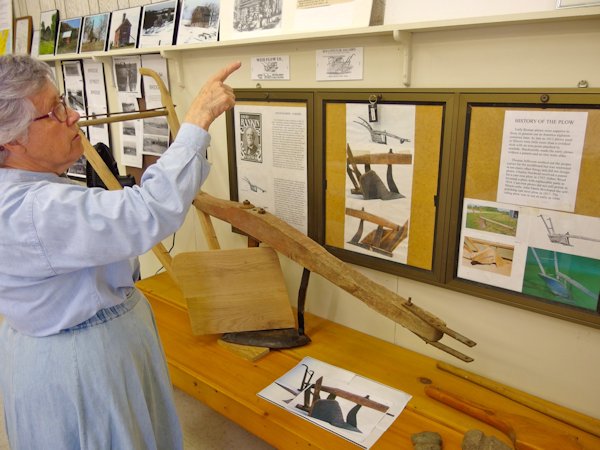
The Hancock-Henderson Quill, Inc.
by Deb Olson and Dessa Rodeffer-The Quill
One of the interesting stops on the recent Henderson County Heritage Trails was at The Horse & Buggy Museum at 210 E. Main Street, Biggsville.
Dedicated to telling the story of the horse era, Jerry and Mary Lynn Weibel, the museum's founders, use a combination of modern technology and displays to share the agricultural history they hold so dear.
Their beautiful barn-like steel structure was built and opened in 2006 producing a bright spot in what had been the downtown's dwindling business district. It was quite the talk of the town.
After the first building was built they continued reaching deep in their pockets to refurbish a former library building, and the town's vacated grocery store, greatly sprucing up Biggsville's business district.
The 3-buildings closely match the community center's brown steel siding (at its west) with added highlights of rich dark green.
Tucked inside for all to see is the Weibels' interpretation of the 100-year period when this area was opening up to settlement. It was a period when the farm tractor was beginning to displace working horses on the farm.
During this time, the horse was the dynamo that powered farms on the Illinois prairie from 1820 to 1920.
In telling this story, the Weibels hope to educate people about the contribution the horse made to the advancement of American agriculture, featuring both video and computer technology. On occasion, the Weibels will use living history demonstrations to tell the story of this important period in the history.
The museum features over 50 pieces of early farm equipment displays along with many prints, photos, news clippings, and magazine articles which highlight the rich heritage of this area.
Mary Lynn Watson Weibel can trace her ancestry in this area back to 1837, before the Civil War.
The museum is dedicated to her ancestor Elisha Watson. His story illustrates how the settling of the Northwest Territory, of which Illinois was a part, helped create the United States and extend its borders from ocean to ocean.
Agriculture, the horse, and its hard working people all played an important role in that expansion.
The Weibels encourage schools to bring students to tour the museum not only to learn about the horse's role in America's long farming tradition, but also to learn about their rich agricultural heritage.
The museum shows how the past connects to the future as agriculture continues to play an important role in this area's day to day life. Some of the exhibits relate to Biggsville, its people, businesses, schools, etc. Other exhibits shows history of Weir's Fruit Farm, reconstruction of the covered bridge after the flood.
Horse & Buggy Museum hours are 10 a.m. to 3 p.m. Tuesday thru Saturday from March 15 to July 15; September 15 through November 15.
For more information call 309-221-0066 or visit www.horseandbuggymuseum.com

Mary Lynn Weibel points to a photo and news clipping of a Henderson County man David Rankin telling of his ownership of 25,640 acres of land on Oct.10, 1910 in Tarkio, MO and his planting of 19,000 acres of corn yearly yielding 1 million bushels using 1,000 horses and mules in his operation.